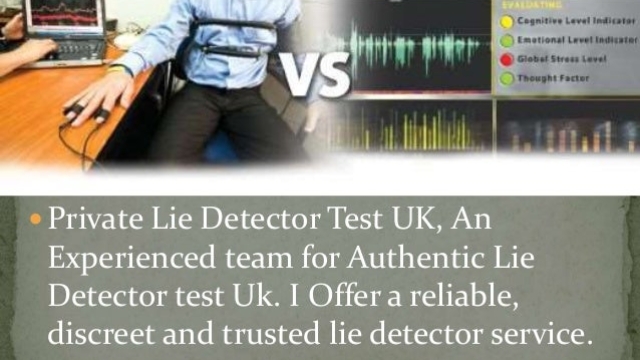
Step into the intriguing world of lie detector tests, where truth and deception collide amidst the pulsing heartbeat of uncertainty. From criminal investigations to employment screenings, the polygraph test has long been a contentious tool in uncovering hidden truths. As individuals are strapped into the hot seat, the machine poised to unmask their deepest secrets, the battle between fact and fiction unfolds in a captivating dance of physiological responses. The very essence of human nature is put to the test, as hearts race and palms sweat under the scrutinizing gaze of this high-tech arbiter of honesty.
History of Lie Detector Tests
Lie detector tests have a long and complex history, dating back to the early 20th century. Initially developed by psychologist William Moulton Marston, the first rudimentary lie detector machine was called the systolic blood pressure test. This device measured changes in blood pressure, which Marston believed were indicative of deception.
Throughout the years, the technology behind lie detector tests has evolved considerably. In the 1920s, John Larson further advanced the polygraph machine by incorporating additional physiological indicators such as respiration and galvanic skin response. These innovations laid the foundation for modern polygraph examinations used in criminal investigations and security screenings.
Despite their widespread use, lie detector tests remain a topic of controversy and debate within the scientific and legal communities. Critics argue that the accuracy of these tests can be influenced by various factors, including the subject’s psychological state and the examiner’s interpretation of the results. As technology continues to advance, researchers strive to improve the reliability and validity of lie detector tests.
Polygraph
How Lie Detector Tests Work
Lie detector tests, also known as polygraphs, operate on the principle that physiological responses can indicate deception. When a person undergoes a polygraph test, sensors are attached to their body to measure various physiological indicators such as heart rate, blood pressure, respiration, and skin conductivity. These indicators can fluctuate when a person is being deceptive, as the body may experience stress or anxiety in response to lying.
The polygraph examiner carefully monitors the physiological responses during the questioning process to detect any patterns or changes that may suggest dishonesty. Before the actual test begins, a baseline is established by asking control questions to which the examiner already knows the answers. This baseline helps in distinguishing between normal physiological reactions and those that may be indicative of deception.
During the test, the examinee is asked relevant questions about the issue under investigation, as well as comparison questions that serve as a point of reference for the examiner. The examiner analyzes the data collected from the sensors to determine if there are significant deviations in the physiological responses to the relevant questions compared to the control and comparison questions. This analysis, combined with the examiner’s expertise in interpreting the results, forms the basis for determining whether the individual is being deceptive.
Accuracy and Controversies
When it comes to the accuracy of lie detector tests, there is much debate among experts. While some studies suggest that polygraph tests can be effective in detecting deception, others argue that the results are not always reliable. This controversy stems from the fact that factors such as the individual’s emotional state, physiological responses, and the skill of the examiner can all influence the test results.
One of the main criticisms of lie detector tests is their susceptibility to producing false positives and false negatives. False positives occur when the test incorrectly identifies a truthful person as being deceptive, while false negatives occur when a deceptive person is wrongly classified as telling the truth. These inaccuracies have raised concerns about the validity and credibility of polygraph testing in legal and investigative settings.
Despite the controversies surrounding the accuracy of lie detector tests, they continue to be used in certain contexts such as pre-employment screenings and criminal investigations. Proponents argue that when administered by trained professionals and used in conjunction with other investigative techniques, polygraph tests can provide valuable information. However, skeptics maintain that the inherent limitations and potential for error make it important to interpret the results of these tests with caution.
